One of the hardest things for me to wrap my head around for a long time was the concept of “product market fit” (PMF). It’s easy enough to describe: “pull in the market for your product”. And I was told many a time that if I wasn’t “feeling it” then I “didn’t have it”. But the job of a PM is to not only achieve PMF but sustain it over the life of a product as the market evolves - how are you supposed to do that when you can’t pinpoint where you stand and where you need to get to?
Then it hit me. PMF is transient, and you need to “flex” your product muscles to get into the state required to do the lifting on behalf of the customer / user. I’ll admit the weightlifting anology is a stretch (get it!), so let’s try some visuals…
The diagram above shows the evolution of a product vs the needs of the market.
At any given moment in time, even if you have PMF, you still need to be working towards a future state where the market has evolved, and your product has kept up.
In other words, the product capabilities need to line up with market maturity in order to have a fit - that’s my definition of PMF.
There will be times when your product is over-built for the current market need and a simpler solution would suffice.
And there will be times with the market needs more sophisticated capabilities and your product can’t meet expectations.
So what do you do if you end up in this mismatch of capabilities and maturity?
Well, this is the heart of “product work” (which is done not only by PMs but Design, Engineering, GTM, etc).
There are 2 dimensions on which we can flex to achieve PMF.
Reduce the effort required by the user to get value
Increase the literacy level of your target user base
The R&D and GTM bets that you make should be designed to reduce effort / increase literacy respectively. In a future post I’ll cover some case studies and strategies for doing this successfuly, but the biggest takeaway is that achieving and sustaining PMF is likely a combination of effort-reducing and literacy-increasing bets made in conjunction.
tl;dr R&D and GTM teams should be coordinating on PMF
As always, I’d also love to hear from readers on their attempts to achieve and sustain PMF - please chime in via comments👇. And if you enjoyed this post, please consider subscribing.
further reading / references
New Toolkit, Old Mindset is an audio post where I talk about what happens when product capabilities don’t line up with market maturity
4 Ways to F Up Product Development is a prior post where I talk about different types of bets (thanks Reforge!) and my issues with the idea of PMF
Layering Product Choices is a good way to future-proof PMF (i.e. plan for the inevitable shift and need to re-achieve it)
A Quantitative Approach to PMF (long but great read)
The idea of PMs needing to collaborate with GTM on PMF is not new - I’ve shared my thoughts before on the evolving definition of product management
childish drawing / interpretation





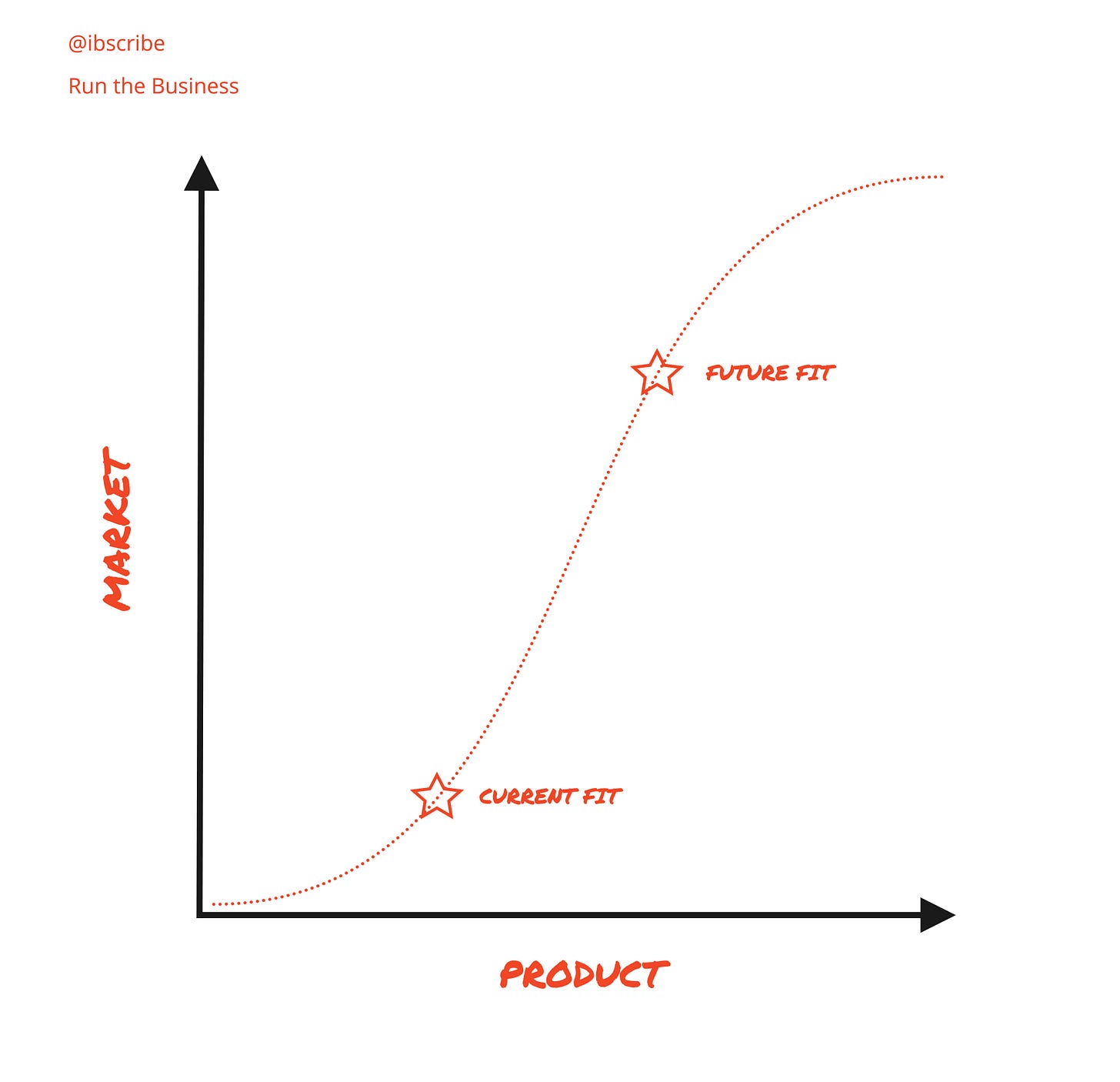
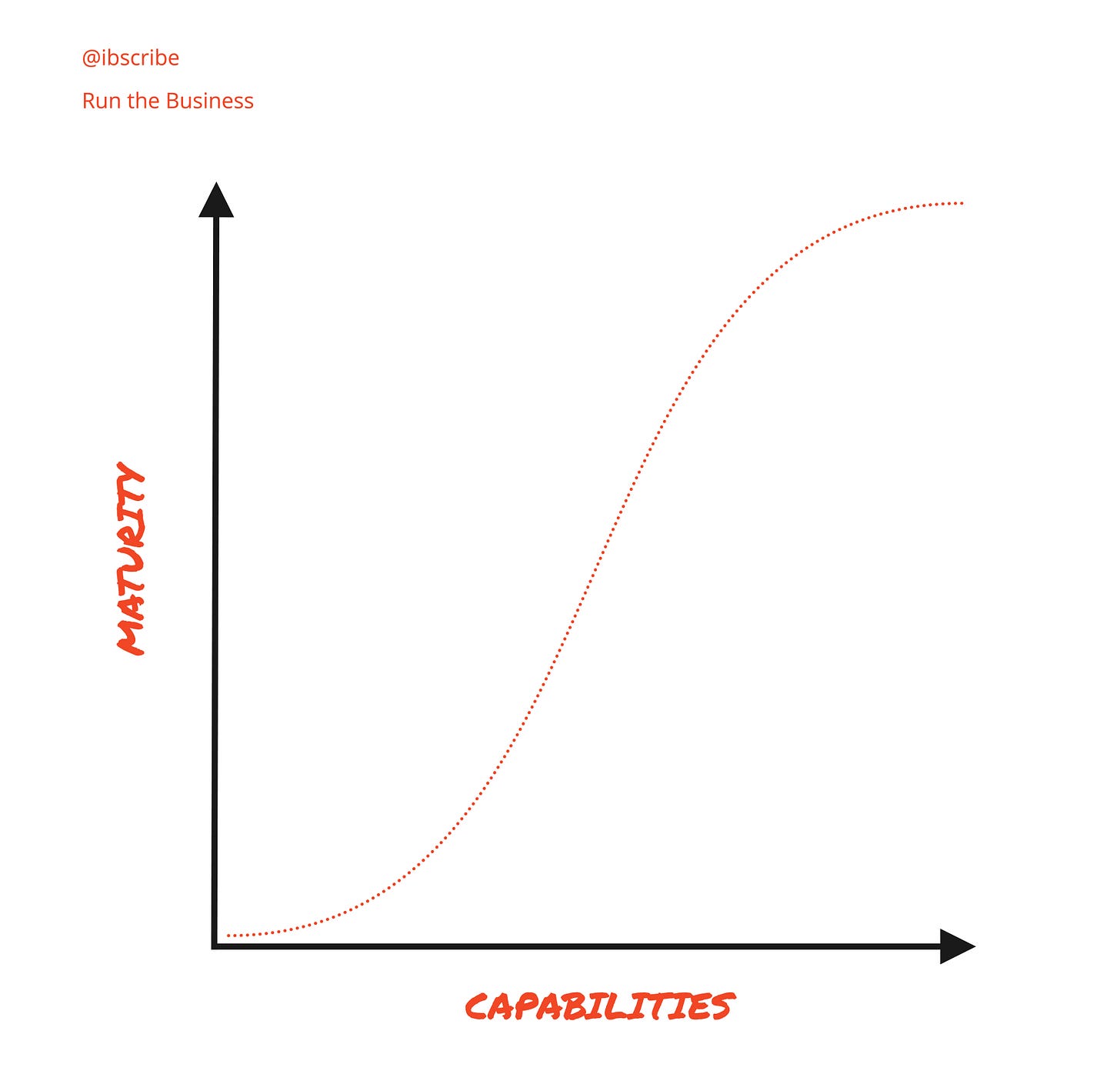
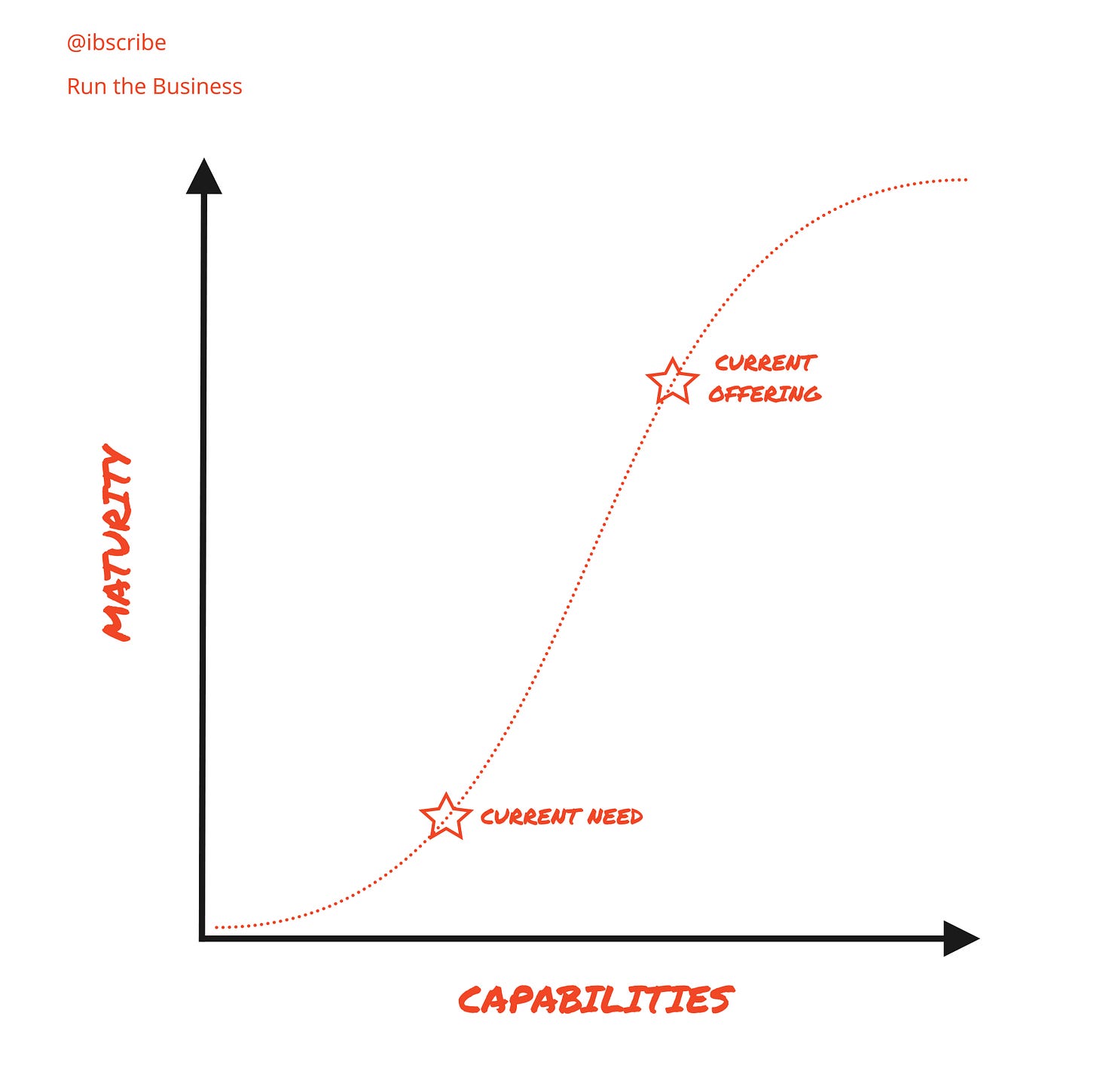
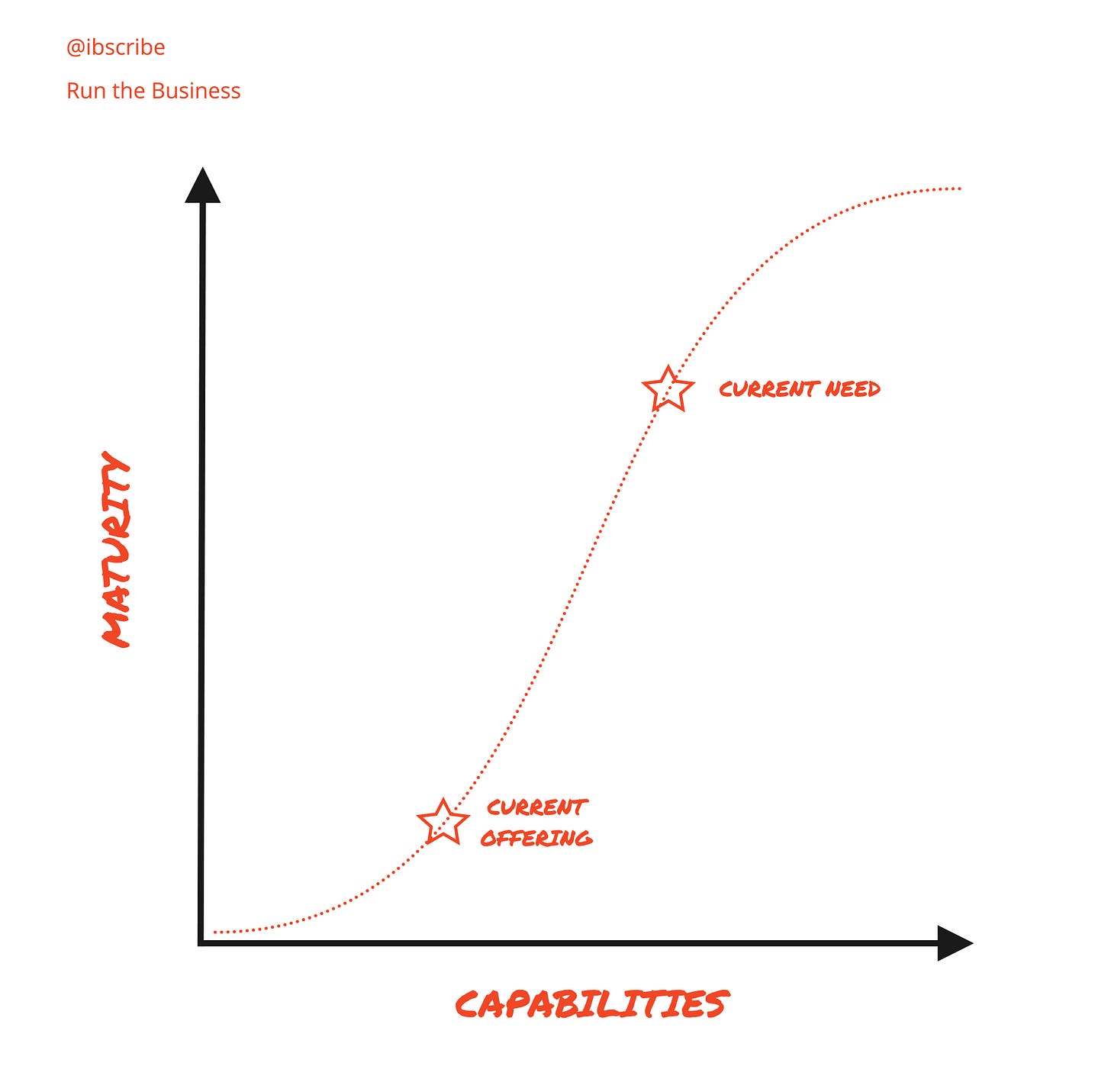
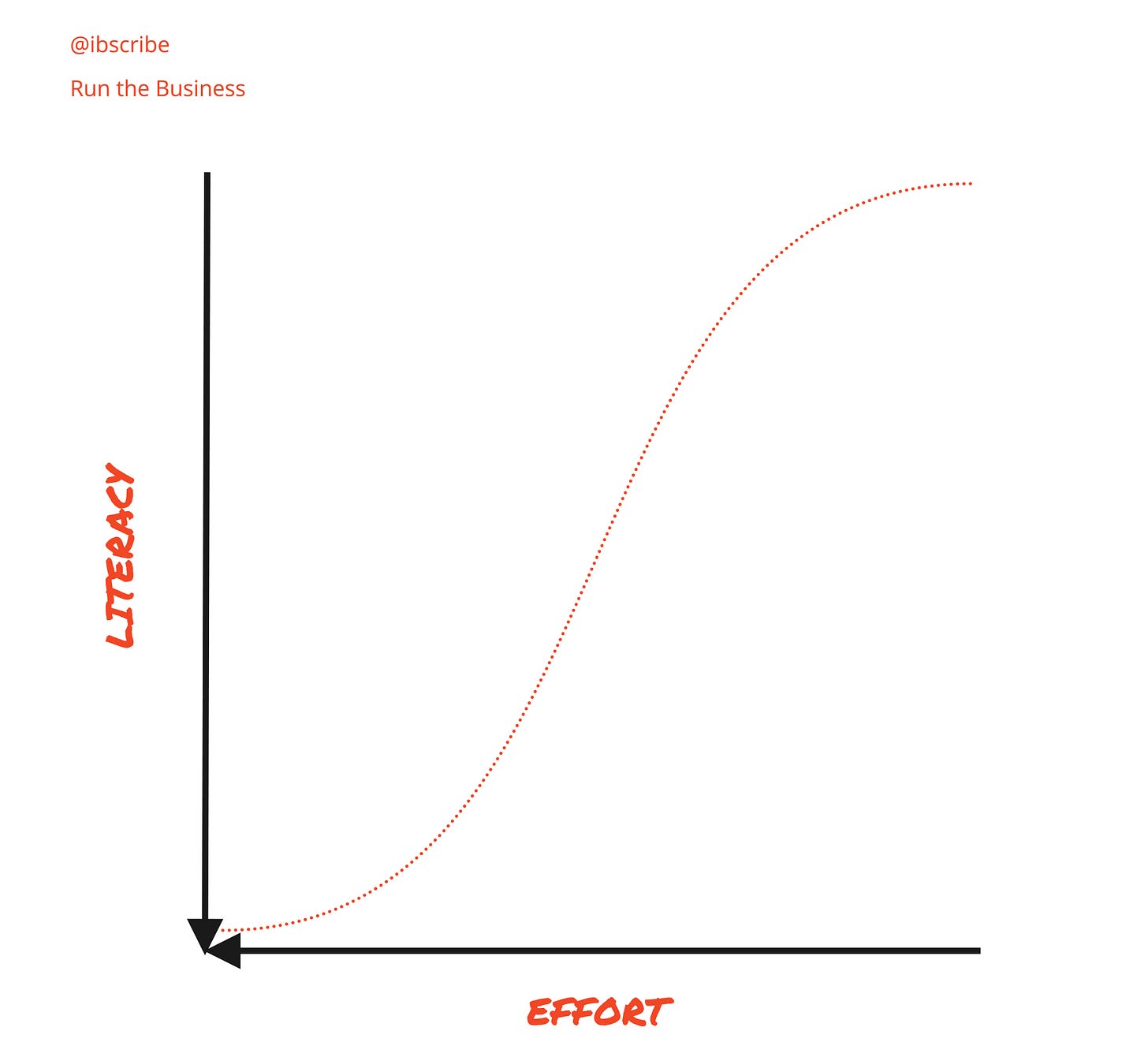
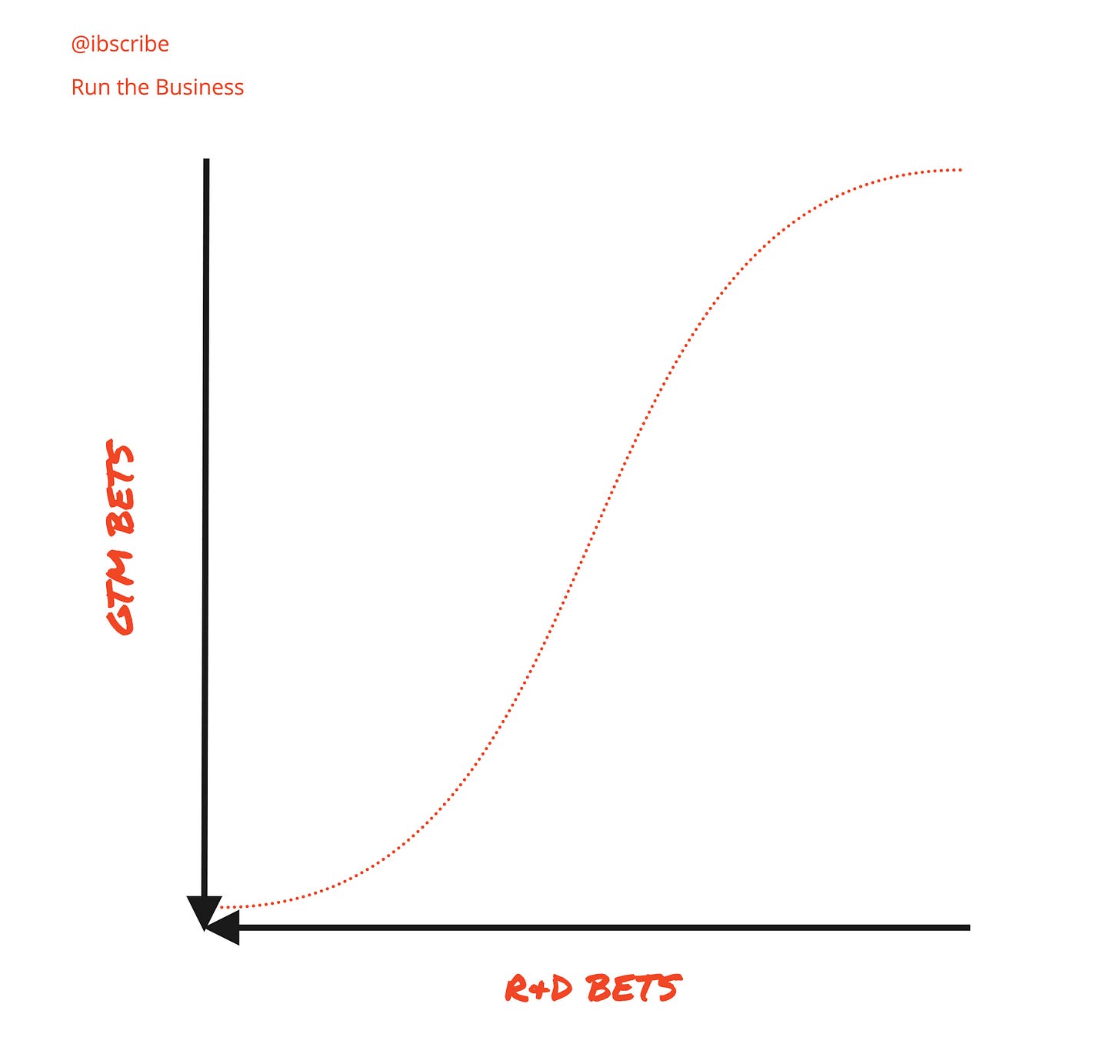

At a certain scale and vertical, having an opinion about the market will allow your product to shape it - the market will meet you. But this is probably rare.
Interesting to think that removing features can actually get you further along the curved, and aligned with the market. Relatedly, stratification comes into play at some point, so the same product can meet different market segments (you might consider several curves in one graph).
Lastly, I do wonder if "subscriptions" tend to become a replacement for truly meeting needs, as you have the proxy for success (recurring revenue) but without knowing if and how your product should evolve in terms of feature set and capabilities and bundling to match a future market state (I'm thinking x delivery).
Really appreciated this tweak on PMF; it’s an iterative + dynamic process where the GTM team needs to contribute whether thru Marketing campaigns, Sales altering purchase dynamics (to de-risk for buyer) or Partners helping to clear up rough edges on a buying experience.
Thanks for sharing; gonna riff on this with my Product team.